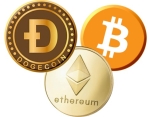Yes Disney Parks Produce A Lot Of Waste But Here Is A Peek At How They Manage It
ID:
TMS-5278
Source:
USA Today
Author:
Eve Chen
Dateline:
Posted:
Status:
Current
Anyone who’s seen “Peter Pan” or has heard of Tinker Bell knows about pixie dust, the mystical fairy powder that gives characters the power to fly in films. But it’s a real thing at Disney parks.
It often refers to seemingly random bits of Disney magic designed to surprise and delight guests, like an unexpected free upgrade in accommodations or small treat at no cost to them.
But there’s another kind of pixie dust at play at Walt Disney World and Disneyland, which are among theme park destinations working to improve environmental sustainability.
“It's how we make the magic for our guests that is really important,” said Dr. Mark Penning, Vice President of Animals, Science and Environment for Disney Parks, Experiences and Products.
He and Janet Vogelgesang, Vice President of Experience Optimization at Disneyland Resort, let USA TODAY in on some of that magic.
How is Disney reducing waste?
“When it comes to waste, we've got to remember that Walt Disney World is essentially a city the size of San Francisco,” Penning said. “That's not an easy thing, to manage so many different waste streams.”
Two examples: wine bottles and cooking oil.
“There just hasn't been a market for recycling of glass bottles for years now,” he said. “So the team looked at glass and said, ‘Let's be sensible about this. Glass is just silica sand that's been processed. Can we turn it back into sand?’ ”
A machine at Disney World now pulverizes empty bottles into “the most beautiful grains of sand,” which he said replenishes beaches, road surfaces and other areas around the Florida resort.
At Disneyland, cooking oil from the California resort’s kitchens is recycled into biodiesel for powering its steam trains and Mark Twain Riverboat.
There are countless other examples. “There's so much that we do,” said Vogelgesang, who oversees Disneyland’s environmental integration team. “The pixie dust behind the magic is where the real sustainability magic happens.”
What does Disney do with their food waste?
Disney parks donate millions of pounds of unserved food to local food banks each year.
Additionally, Disneyland repurposes more than 5 million pounds of food scraps annually, through an EPA award-winning program. From kitchen scraps to guest leftovers, food scraps are collected across the resort and taken to a local vendor, which adds nutrients to them and converts them to feed for animals.
Most of the work is out of guests’ view, but there are three quick-service dining locations piloting food scrap sorting bins for guests to use: Pym Test Kitchen at Disney California Adventure, and Galactic Grill and Hungry Bear Restaurant at Disneyland.
Disney World composts its food scraps and runs a unique pilot program at Restaurantosauros in Disney’s Animal Kingdom.
“The guest gets a plate and a knife and fork, all of which is compostable, along with food. If there are any food scraps, it all goes together and that is composted,” Penning said. The compost then fertilizes landscaping around the restaurant and gives the park a chance to show guests what they can do at home.
Additionally, Restaurantosauros cast members wear costumes made from recycled water bottles, collected at the parks.
How is Disney conserving water?
Both Disney World and Disneyland are meticulous about water use and reuse.
“We've actually got three weather stations on our property, and we're drawing data constantly of weather conditions and moisture in the soil and all that sort of thing,” Penning said. “And we have a centrally controlled irrigation system that then directs the water to exactly where it is needed, at the scale of a city. I don't think there is a larger, centrally controlled irrigation system anywhere in the world.”
He noted 80% of Disney World’s irrigation needs are met with reclaimed wastewater.
Disneyland won a SEAL award for its irrigation control measures. The resort also uses drought-tolerant plants in places like Cars Land and Star Wars: Galaxy’s Edge. It has converted all of its restroom fixtures to be low-flow or ultra low-flow, saving over 100 million gallons of water a year. Disneyland also partners with Orange County to recirculate water.
“We have big bodies of water, lagoons, rivers. We have big water attractions,” Vogelgesang said. “Any water that comes out of there does not go into the storm drains, it does not go into the ocean. It is filtered back into the aquifer, purified and filtered into the groundwater for the city.”
The resort also captures rainwater across 60 acres of porous asphalt, which gets filtered into the groundwater.
“All of that is built-in and another one of those magical things that the guests don't even know is happening,” she said.
What does Disney do for the environment?
Long before sustainability became trendy, Walt Disney said: “Conservation isn’t just the business of a few people. It’s a matter that concerns all of us … The natural resources of our vast continent are not inexhaustible. But if we use our riches wisely, iIf we will protect our wildlife and preserve our lakes and streams, these things will last for generations to come.”
Over the years, the Disney Conservation Fund has helped support thousands of conservation projects around the world, but the company also sets specific environmental goals for its own properties.
What are Disney's environmental aims?
The Walt Disney Company's environmental goals for 2030 include:
Achieving net-zero emissions for direct operations at all Disney owned and operated entities by 2030
Purchasing or producing 100% zero-carbon electricity by 2030
Achieving zero waste to landfill for wholly owned and operated parks, resorts and Disney Cruise Line by 2030
Reducing single-use plastic in parks and resorts and eliminating them on cruise ships by 2025
“So much of this work that's going on just isn't even visible to the guests,” he said. “We just want them to know that we care about it enough that we're going to make it happen whether they see it or not.”
How can guests help? Guests can do their part by being mindful of resources and recycling when possible, which is every few feet in the parks.
“We want a whole lot of things happening behind the scenes that are just pixie dust, things that just magically happen, but also we want to try and make it easy for the guests to make the right environmental choices,” Penning said.
“If it's not easy, no one's going to do it,” said Vogelgesang. Guests can also try to understand changes that impact them, like the elimination of all single-use plastic straws and stirrers across Disney owned and operated properties. Not everyone loves the paper straw replacements, but Penning said, “We were able to remove 200 million a year out of circulation.”
Attractions Referenced In This Article:
Restaurants Referenced In This Article:
Lands Referenced In This Article:





